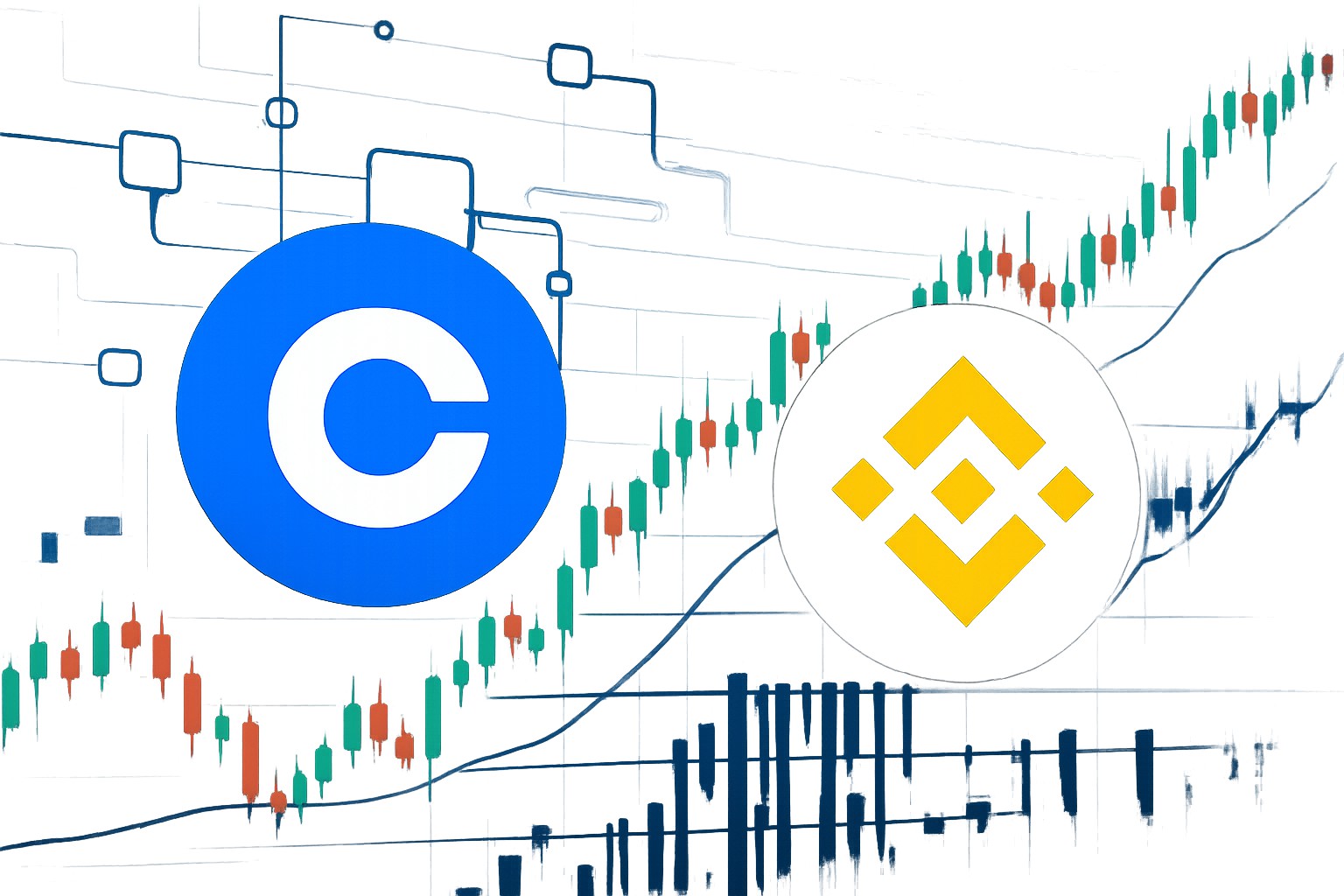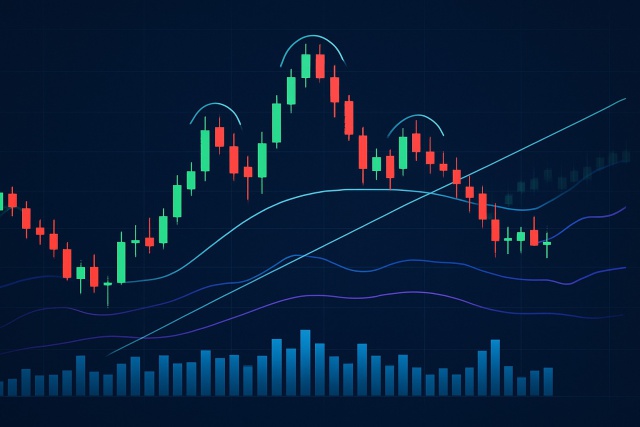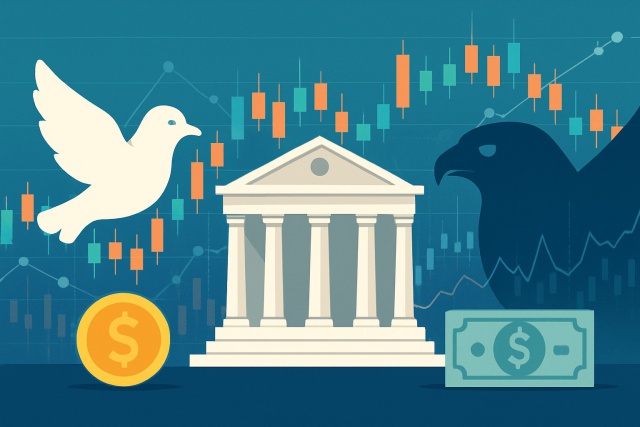
IOU Meaning in Finance
Discover what IOUs mean in finance, their role as informal debt acknowledgments, and how understandi...

When it comes to choosing a crypto exchange many individuals end up torn between Coinbase and Binance. Both platforms offer solid trading options but differ quite a bit in features, fees, security and user-friendliness.
This comparison takes a closer look at Binance and Coinbase, tackling fees, security, user experience, and trading options to help you figure out which platform feels like the right fit.
| Criteria |  |  |
|---|---|---|
| Pricing | Spot trading fees sit at 0.1%, futures even lower at 0.04%, and deposits won’t cost you a dime | Trading fees run at 1.49%, withdrawal costs 0.0005 BTC, but deposits come free of charge |
| Liquidity | Generally enjoys high liquidity across a broad spectrum of cryptocurrencies — plenty of fish in this sea | Offers good liquidity, though you’ll find fewer cryptocurrencies available compared to some competitors |
| User Experience | User-friendly overall, but can feel a bit like a maze if you’re just dipping your toes in | Clean, simple, and easy to navigate — a breath of fresh air for beginners stepping into crypto |
| Security | Has weathered some security breaches in the past; follows standard industry practices to keep things locked down | Strong protections in place, including insurance policies and cold storage, so your assets sleep safely at night |
| Trading Options | Covers the gamut from spot and futures to margin trading, plus some neat advanced tools for the pros | Focuses mainly on basic spot trading, leaving the more complex strategies to other platforms |
| Customer Support | Support options are on the leaner side and you might find yourself playing the waiting game a little too often | Generally responsive with straightforward options like live chat and email, making help more accessible |
| Pros and Cons | Pros include low fees, strong liquidity, and a broad array of trading tools. On the flip side, be ready for a potentially tricky interface, limited support, and some past security red flags | Pros include solid security, thoughtful customer support, and a beginner-friendly vibe. Cons? Higher fees, fewer trading options, and a narrower crypto selection |
| Go to Binance Website | Go to Coinbase Website |


Binance really pulls ahead with its vast selection of cryptocurrencies—offering over 500 coins for those eager to craft diverse portfolios or dive into some niche tokens. Meanwhile, Coinbase keeps things more tidy with around 150 cryptocurrencies carefully picked to maintain quality and keep everything user-friendly and compliant. Both platforms let you trade on the spot market but Binance doesn’t stop there. It also offers futures, margin, and options trading plus staking and a launchpad for token sales. Coinbase tends to focus mostly on spot trading and staking a handful of assets, prioritizing simplicity and security over variety.
| Feature | Coinbase | Binance |
|---|---|---|
| Number of Cryptos | Around 150 | Over 500 |
| Spot Trading | Available | Available |
| Futures Trading | Nope, not on the menu | You bet, it’s available |
| Margin Trading | Not offered | Yup, you can trade on margin |
| Staking Options | Yes, though a bit limited | Plenty of choices here |
| Launchpad (Token Sales) | Nope, not in the lineup | Ready and waiting for you |
| P2P Trading | Not available | Yep, trading peer-to-peer here |
Trading fees definitely play a big role when picking an exchange. Binance’s fees are wallet-friendly, starting at 0.1% for spot trading and going as low as 0.04% for futures. Plus, they don’t charge a dime for deposits which is always a pleasant surprise. They also offer tiered VIP programs and throw in discounts if you hold Binance Coin (BNB). Meanwhile, Coinbase tends to be pricier, charging around 1.49% for standard trades. Coinbase Pro helps lower costs for more active traders.
Coinbase really shines with its clean no-nonsense design that greets newcomers like an old friend and makes the onboarding process feel smooth and painless thanks to its clear hand-holding prompts. Binance rolls out the red carpet for the seasoned trader with a busier interface packed with advanced charting tools and customizable dashboards. Both mobile apps earn praise but Coinbase keeps things simple while Binance offers a broader suite of features.
A strong set of straightforward charting tools that help users clearly visualize market data and customize chart layouts to fit their trading preferences — no confusing jargon, just what you need to see the market in a way that makes sense to you.
A broad range of technical analysis tools including many indicators, drawing options, and chart types designed to spot market trends and trading signals. Whether you’re marking key levels or hunting for that elusive pattern, these tools have got your back.
Integrated social features connect traders and investors across the globe, enabling them to exchange ideas, strategies, and market perspectives. It’s like having a worldwide trading meet-up without ever leaving your chair.
A platform designed to be accessible for newcomers while still offering advanced tools for seasoned traders, making navigation and tool access smooth and straightforward. No steep learning curve here; just a well-laid-out workspace that invites you in.
Provides multiple chart types, indicator overlays, and the ability to save custom chart templates for easy reuse. Tailor your charts exactly how you like them, and save yourself the hassle of starting fresh every time.
Offers flexible subscription levels like Pro+, Premium, and Elite, each unlocking features such as additional indicators, better alerts, and faster data updates. So whether you want to dip your toes or dive deep, there’s a plan that fits just right.
Provides access to both real-time and slightly delayed market data feeds covering a wide range of assets and exchanges, all integrated directly into charts and analysis tools. You’ll rarely find yourself caught off guard when it comes to timely market moves.
Security remains a top priority for cryptocurrency exchanges and it’s no surprise why. Coinbase has earned its stripes thanks to its meticulous regulatory compliance and rock-solid security measures like cold storage and insurance for assets kept safe. Binance, on the other hand, packs a punch with robust security protocols. It did hit a rough patch with a major hack back in 2019 but moved fast to make things right by reimbursing affected users without missing a beat. Binance’s decentralized approach and global footprint add complexity to regulations. Coinbase tends to stick closer to established U.S. rules which reassures investors who prefer to play it safe.

Visual representation of cryptocurrency exchange security and regulatory compliance
Beyond trading both exchanges bring robust ecosystems that add value for users beyond surface level. Coinbase offers a straightforward Coinbase Wallet that makes it easy to manage your assets securely and in a decentralized way—no fuss no muss. They also provide educational resources perfect for those just starting with crypto. On the flip side Binance boasts the Binance Smart Chain ecosystem which supports DeFi applications and NFT marketplaces while playing nicely with other blockchain apps. Both platforms offer staking rewards to keep your portfolio humming.
Delivers a deep dive into trade data, uncovering patterns, performance metrics, and strategy outcomes that traders might otherwise miss. It’s like having a magnifying glass on your strengths and those pesky weak spots that need a little extra TLC.
Lets users set and vigilantly monitor stop-loss levels, figure out the best position sizes, and gauge risk so they don’t find themselves biting off more than they can chew.
Digs into emotional biases and behavior quirks, offering tailored feedback and strategies that help build discipline and sharpen decision-making when the pressure’s really on.
Plays nicely across a wide range of financial markets, from forex to stocks and futures, giving traders the freedom to juggle different instruments without a fuss.
Brings all your trade records into one neat, centralized hub with plenty of data entry and review tools, making it a breeze to keep tabs on your trades and performance history.
Offers Basic, Pro, and Elite plans priced at $169, $249, and $349 respectively. Each plan unlocks extra features designed to fit traders at different stages and with varying needs.
Tools that automatically sniff out key trends, support and resistance levels, and potential entry and exit points, slashing the need to pore over charts manually.
Options to craft and tweak technical indicators to perfectly match your trading strategies and personal quirks.
Packed with advanced charting tricks like Fibonacci retracements, stacking multiple timeframes, and real-time price alerts so you’re always in the loop.
Harnesses AI algorithms to consistently pick out chart patterns like head and shoulders, triangles, and channels like a seasoned pro.
A smorgasbord of plans ranging from Basic to Pro and Premium, each unlocking fancier features and personalized support.
Built-in tools engineered to streamline technical analysis workflows, chopping down the time it takes to decode complex data.
Customer support is definitely a key piece of the puzzle. Coinbase usually gets props for its quick and helpful responses via live chat, email and phone—something I’ve noticed puts individuals at ease. Binance doesn’t offer as many direct support options but makes up for it with a bustling community forum and a multilingual help desk ready to help. Both platforms keep things lively on social media and provide plenty of educational resources.
Deciding between Coinbase and Binance often comes down to your experience and what you want in a platform. If you are new to crypto, Coinbase feels more user-friendly and offers peace of mind with strong regulatory oversight and responsive customer support. On the other hand, seasoned traders tend to prefer Binance for its wide range of cryptocurrencies, low fees, and powerful trading tools.
Coinbase shines as an accessible and secure crypto exchange that’s especially friendly for those who value simplicity and robust security. While its fees tend to lean toward the higher side and the selection of cryptocurrencies isn’t exactly exhaustive, its global reach and straightforward features make it a dependable pick for beginners and intermediate traders alike.
Beginner to intermediate cryptocurrency investors who want a secure, no-fuss platform with worldwide access and a solid lineup of mainstream cryptocurrencies.
Binance shines as an affordable, feature-packed crypto exchange boasting strong liquidity and a flexible trading playground. Its appealing low fees and variety of products draw in both rookies and pros alike. However, the platform’s complexity and somewhat limited customer support might give newcomers a bit of a headache. While past security hiccups shouldn’t be ignored, ongoing efforts seem genuinely focused on rebuilding user trust.
Traders seeking low fees, a broad spectrum of trading options, and high liquidity. It’s a great fit for seasoned crypto investors and intermediate users who feel comfortable tackling advanced features.
Struggling to improve your trading performance? Edgewonk's advanced analytics tools are designed to give you the edge you need.
With detailed trade journaling, robust strategy analysis, and psychological insights, you'll gain a comprehensive understanding of your strengths and weaknesses. Don't miss out on this game-changing opportunity.

Traders, it's time to elevate your game. Edgewonk is the ultimate trading journal software designed to empower you with data-driven insights and personalized strategies. Take control of your trading journey and maximize your potential.
20 posts written
Driven by an insatiable curiosity for behavioral economics and its impact on trading psychology, Sophia Dekkers offers groundbreaking insights into harnessing cognitive biases for improved decision-making.
Read Articles
Discover what IOUs mean in finance, their role as informal debt acknowledgments, and how understandi...

Unlock the power of the head and shoulders pattern with this complete guide. Learn to spot, trade, a...

Explore a detailed review of OspreyFX, highlighting its trading features, competitive pricing, and i...

Discover how central banks' hawkish and dovish stances shape financial markets and affect your inves...
